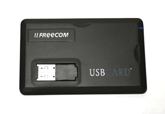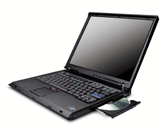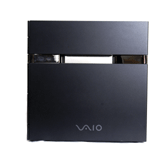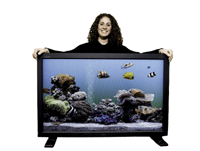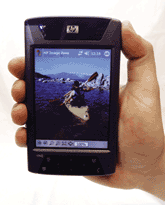The GCN Lab looks at over 300 products a year, many of them quite good. But there are usually a few that stand out, whether for their gee-whiz factor or their technolgical advances.[IMGCAP(2)] Each year we like to look back at the best of the best. After what we consider a couple of dry years in technology innovation, 2004 brought several products that captured our interest, from a tiny projector to a huge computer monitor. Here, briefly, are some products that helped make 2004 a good year for technology.This was the year when tiny digital light-processing projectors really started to become useful. In the past, tiny DLPs that you could slip into your computer bag had anemic light power requiring a fully dark room. But things started to change, and the Dell 320MP led the charge.The 3.9-pound projector can blast 650 lumens onto a screen at 10 feet. This makes it one of the first ultraportable projectors suitable for all lighting conditions.Key drives also increased tenfold in popularity this year, with users now able to carry hundreds of megabytes, or even gigabytes, in the palm of a hand.We were most impressed with the Freecom Technologies USB Card [GCN, May 3, Page 38]. Shaped like a credit card and not very much thicker, it slips easily into your wallet. A USB connector pops up and out of the card, rotating 180 degrees for attachment to your computer. We tested a 512M drive that cost $104, about 20 cents per megabyte. And the data is password-protected and encrypted to ensure security.[IMGCAP(3)] All the storage in the world is useless without a powerful computer. The IBM ThinkPad T42 with its 1.8GHz Intel Pentium M processor blew the doors off the competition in this year's notebook roundup by averaging 8,200 on the Alterion-Odin Benchmarks, 15 percent higher than the comptetion average.The T42 was one of only two notebooks in the review with 802.11a, b and g capabilities, and the only one that locks the hard drive automatically when the machine senses a fall. This locking mechanism can't save the $2,900 wasted if you drop the notebook and break it, but at least you won't lose your work.A final plus setting the T42 apart is its sleek 13- by 10.6- by 1.4-inch frame and light 5.3 pounds. These two features, along with a battery life exceeding three hours and 15 minutes, make the T42 one of the most portable workhorses we've ever seen.Of course, portable workhorse is becoming a relative term. Handheld computers keep getting better. Our favorite is the Hewlett-Packard iPaq hx4700 [GCN, Aug. 16, Page 58]. This tiny handheld is one of the first to come with a VGA display, which, combined with a robust 624MHz Intel processor and 128M of memory, make for one of the best working environments we've seen in a personal digital assistant. With built-in 802.11b connectivity, as well as Compact Flash and SecureDigital slots for expansion, there's very little you can't do.[IMGCAP(4)] Of course, handhelds still come with caveats. The hx4700's are its 5.1- by 3- by 0.6-inch form factor, slightly bulky for a handheld, and a $649 price tag, which reflects the PDA's high performance and functionality. Still, the GCN Lab sees the hx4700 as a pivotal step forward for handheld computing.Another step in the direction of progress is the Sony Vaio VGC-RA810G. It's got a hole right through the center of the case to improve airflow and ensure quiet operation. That's innovative, considering the Vaio is powered by Intel's 3.4GHz Pentium 4 Intel processor, commonly known as Prescott, which tends to run warm.Overall, Sony has packed so much power and so many features into this $2,134 Vaio (as configured for our tests) that we spent an hour looking for a kitchen sink. In addition to being a top-flight business system, the Vaio doubles as a Windows Media Center system, complete with remote control for operating multimedia features such as a TV tuner and TiVo-style recording feature.[IMGCAP(5)] Our test system had 1G of DDR-2 RAM, a 230M hard drive and an ATI X600XT graphics card'all impressive. It also had the new Intel i915 chip set, aka Grantdale, which debuted in 2004 with a firmware glitch. But the setbacks were well worth the increased performance we noticed from the new chip set.The Sony Vaio outscored its closest competitor in our review by a thousand points'or slightly more than 10 percent'on the Alterion-Odin benchmark test. With prices dropping, you may be able to find it for under $2,000.The NEC PlasmaSync 61XM3 plasma monitor may not be under $2,000 (try more than $10,000), but you'll know why when you see it. Besides earning high marks for color, text and video display, the screen measures a whopping 61 inches diagonally, making it the largest traditional monitor the lab has reviewed.Plasma technology may be falling out of favor in the face of ever-bigger LCD monitors, but in the meantime NEC has clearly created a product that makes sense for law enforcement, military and other government applications.Finally, and we may get angry letters for this one, the Windows XP Service Pack 2 is our favorite piece of software this year [GCN, Sept. 13, Page 42]. Unlike the first service pack, which accomplished next to nothing other than satisfying ridiculous court-mandated re-quirements, Service Pack 2 makes almost every component of the XP OS more secure and easier to use.[IMGCAP(6)] We installed it on eight different systems and had no problems. And Microsoft Corp. gave it out for free, even mailing disks to those who needed it, which was the right way to distribute this very important program update.Leave it to Microsoft to make news in 2004, but we saw several other companies pushing the technological envelope. We hope this trend continues into 2005 and beyond.
Freecom Technologies USB card
NEC PlasmaSync 61XM3 monitor


